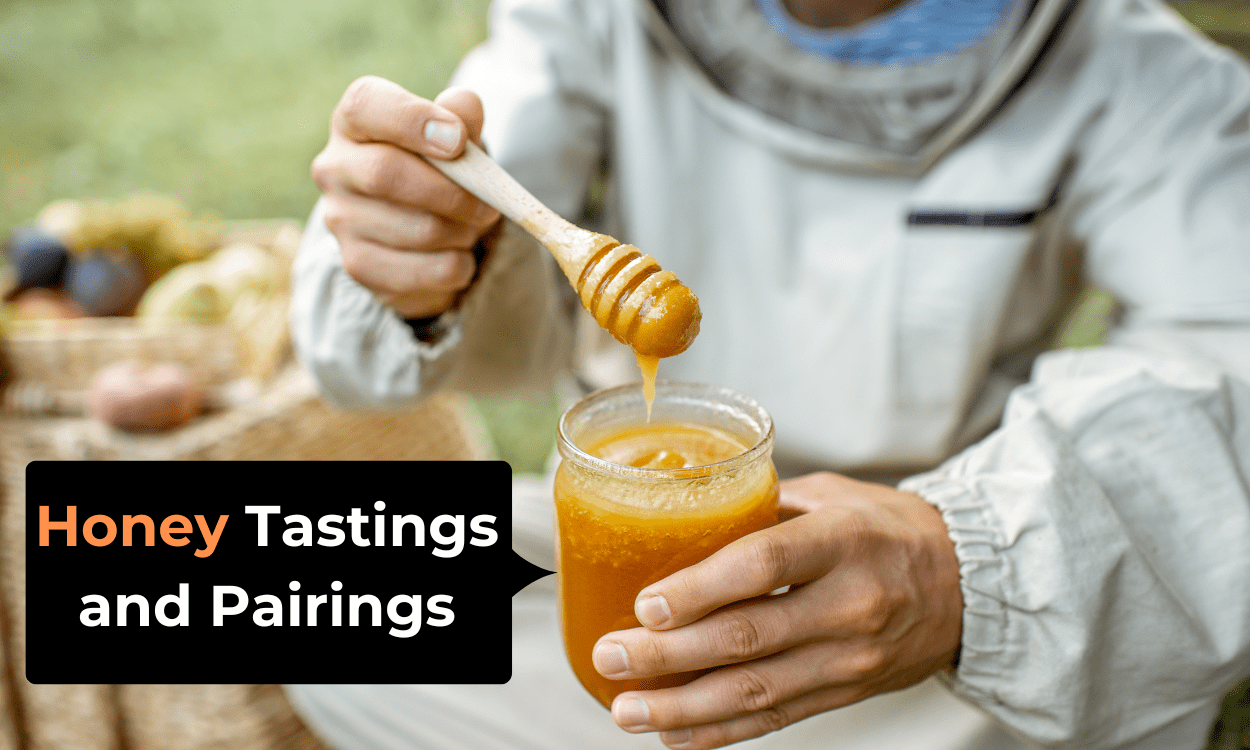

Honey Tastings and Pairings: Discovering New Flavor Profiles
Honey is one of nature’s most complex and interesting ingredients, offering a diverse array of flavors that extend far beyond the classic “sweet” profile. From bright and floral to rich and earthy, the world of honey is a veritable flavor adventure waiting to be explored. One of the best ways to uncover the incredible versatility of honey is through organized honey tastings and pairings.
The Rise of Honey Appreciation
Just as wine tasting has become a refined and respected practice, honey tasting is rapidly gaining popularity among food enthusiasts. This rise in honey appreciation is fueled by a growing awareness of the incredible diversity of honey varieties, each with its own unique flavor profile shaped by the local flora, climate, and beekeeping practices.
“There’s been a real shift in how people view and consume honey over the last several years,” says Sarah Johnson, a renowned honey sommelier and educator. “Consumers are becoming more curious about exploring different honey varieties and discovering how the flavor can dramatically change based on the nectar source and production region.”
This curiosity has led to the emergence of specialized honey shops, tastings, and pairing events that allow honey lovers to delve deeper into the complex world of this golden elixir. Through these opportunities, people are able to not only taste a variety of honeys side-by-side, but also learn how to pair them with complementary foods, beverages, and even other ingredients.
The Art of Honey Tasting
Much like wine tasting, honey tasting requires a keen eye, nose, and palate to fully appreciate the nuances of each variety. Professional honey tasters, or “pitmasters,” use a structured approach to systematically evaluate a honey’s appearance, aroma, and flavor profile.
“When tasting honey, you want to start by observing the color and viscosity,” explains Johnson. “Honey can range from nearly colorless to deep amber, with textures that vary from thin and runny to thick and creamy. These visual cues already begin to hint at the flavor experience to come.”
Next, honey tasters rely on their sense of smell to detect the aromas present in the honey. Some honey may exhibit floral notes, while others could have earthy, fruity, or even spicy scents. “Identifying these aromatic components is key to understanding how the honey will interact with other foods and flavors,” says Johnson.
Finally, the tasting process involves slowly savoring the honey, allowing the flavors to unfold on the palate. Honey tasters pay close attention to the honey’s sweetness level, as well as any underlying notes of caramel, nuts, or spices. The finish, or aftertaste, is also an important consideration, as it can linger pleasantly or fade quickly.
Through this methodical tasting approach, honey enthusiasts are able to discern the unique flavor profiles of different honey varieties and begin to envision how they might pair with various culinary applications.
Honey and Food Pairing Possibilities
One of the most exciting aspects of honey appreciation is exploring the countless pairing opportunities it presents. Just as wine is thoughtfully matched with specific foods, honey can elevate a dish or beverage when combined with the right complementary flavors.
“Honey is such a versatile ingredient that it can be paired with an incredibly wide range of foods, from savory to sweet,” says Johnson. “The key is understanding how the honey’s unique flavor profile will interact with the other ingredients.”
For example, a bright, floral honey might pair beautifully with fresh fruit, yogurt, or even certain cheeses, while a rich, earthy buckwheat honey could enhance the flavor of roasted meats or root vegetables. Spiced honey, meanwhile, can add depth and complexity to baked goods, sauces, and marinades.
Beyond pairings, honey can also be used as an ingredient itself to create unique flavor combinations. Johnson suggests experimenting with honey-based vinaigrettes, marinades, or even cocktails to discover new and unexpected taste sensations.
“Honey is such a dynamic ingredient, and the possibilities for exploration are endless,” she says. “The more you taste and experiment, the more you’ll uncover about honey’s incredible range of flavors and applications.”
Honey Tasting Events and Workshops
For those eager to delve deeper into the world of honey, attending specialized tasting events and workshops can be an enlightening experience. These educational opportunities allow honey enthusiasts to sample a variety of honey types, learn from expert pitmasters, and discover innovative ways to incorporate honey into their culinary repertoire.
“Honey-tasting events are really taking off, as more people become curious about exploring the diversity of this remarkable ingredient,” says Johnson. “Whether it’s a formal tasting led by a honey sommelier or a casual gathering focused on pairing honey with different foods, these events offer a chance to expand your palate and gain a new appreciation for honey.”
In addition to tastings, some workshops may also cover the art of beekeeping, honey harvesting, and processing, or even the health benefits associated with various honey varieties. These holistic approaches provide a well-rounded understanding of honey’s rich history and unique role in the culinary landscape.
Embracing the Honey Revolution
As the appreciation for honey continues to grow, so too does the opportunity for culinary adventurers to discover new and exciting flavor profiles. By engaging in honey tastings and pairings, food enthusiasts can embark on a sensory journey that reveals the incredible versatility of this natural sweetener.
Whether you’re a honey connoisseur or simply curious about exploring beyond the typical clover or wildflower varieties, the world of honey tasting and pairing is sure to delight and inspire. So the next time you reach for a jar of honey, consider it not just a sweetener, but a gateway to a world of culinary possibilities waiting to be explored.